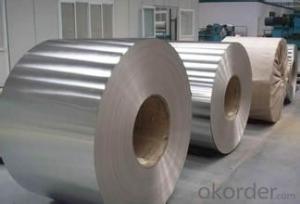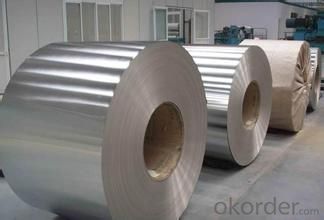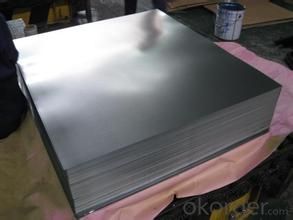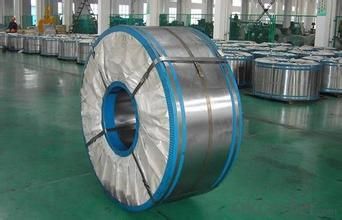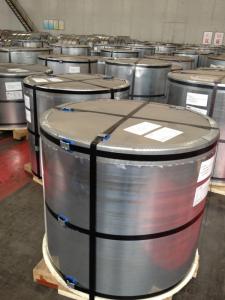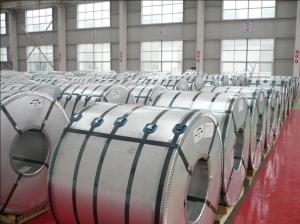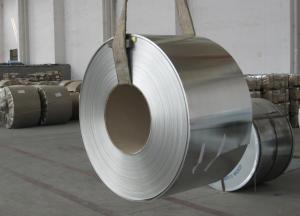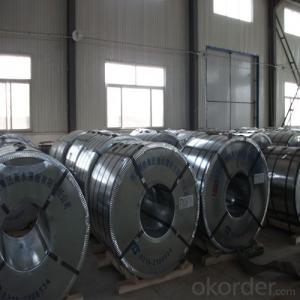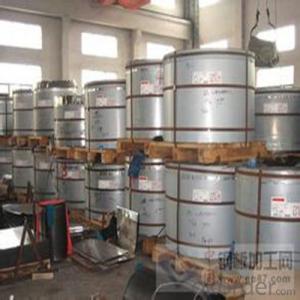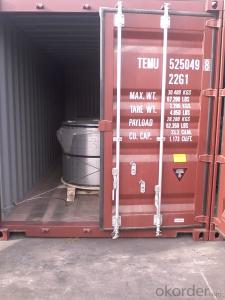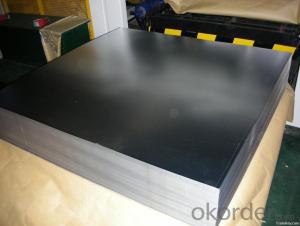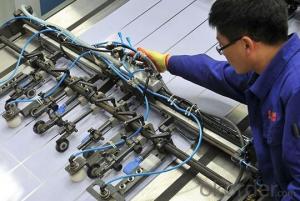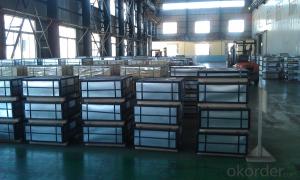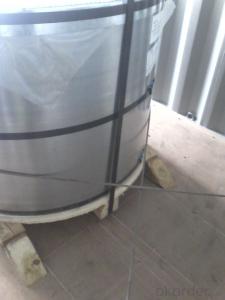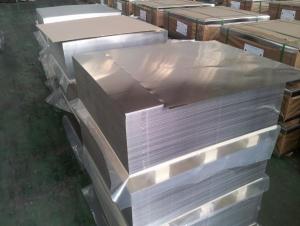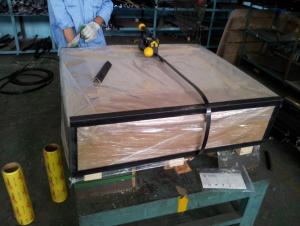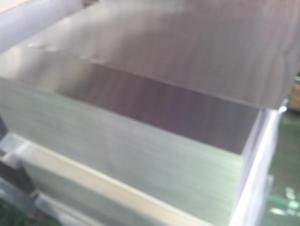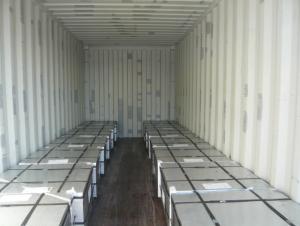Of High Quality ETP sheets
- Loading Port:
- China Main Port
- Payment Terms:
- TT OR LC
- Min Order Qty:
- -
- Supply Capability:
- -
OKorder Service Pledge
OKorder Financial Service
You Might Also Like
Electrolytic Tinplate undoubtedly enjoys the pride of place as a packaging medium especially for food. It owes its unique position to its "nine layer sandwich structure", each of which contributes to its eminence as a packing material. The steel base provides the necessary strength and formability for can fabrication. The tin-iron alloy layer provides the bond between the steel and free tin layer. The free tin layer is not only responsible for the attractive bright finish and ease of solderability but is also non-toxic- a factor of vital importance in food packaging!
Electrolytic TinPlate: Composition
E.T.P. consists of five layers each of which performs a different role:
1. Steel Base: Provides stiffness to the material due to its thickness and mechanical strength. Its chemical composition imparts special properties to resist corrosion.
2. Iron-Tin Alloy: This is made up by the inter-metallic compound Fe-Sn2. Due to its electrochemical characteristics, it acts as a barrier against corrosion. For effective action, its continuity is more important than its quantity.
3. Metallic Tin: Tin has many advantages which have turned it into the most important element to protect steel used for cans; in many foods, it acts as a simple barrier against corrosion, improves weldability, it is an excellent base for lithographic printing and for applying lacquers. In tin-robbing foods, it acts as a sacrificial element.
4. Passivation Film: According to its nature, it makes it possible to improve the E.T.P.’s resistance to sulphiding, oxidation and rust. It is also a conditioner to improve the adherence of varnishes, inks, lacquers etc.
5. Oil Film: Protects the sheet from the humidity in the environment and makes easy to handle. It is applied using an electrostatic oiler on both sides of the sheet.
- Q: How does tinplate impact the overall product design?
- Tinplate impacts the overall product design by providing a durable and corrosion-resistant material that can be easily formed into various shapes. Its versatility allows for intricate designs and details, making it suitable for packaging, containers, and canning. Additionally, tinplate's smooth surface allows for vibrant printing, enhancing the visual appeal of the product. Overall, tinplate plays a crucial role in ensuring the functionality, aesthetics, and longevity of the product design.
- Q: How is tinplate recycled?
- Tinplate is recycled by first collecting it from various sources, such as food cans or packaging materials. The collected tinplate is then sorted and separated from other materials like paper or plastic through a magnetic separation process. After this, the tinplate is shredded into small pieces and further sorted to remove any remaining impurities. The clean tinplate pieces are then melted in a furnace to separate the tin coating from the steel base. The separated tin and steel are both recycled separately, with the tin used for various purposes like coating new tinplate or producing solder, while the steel is reused for manufacturing other steel products. Overall, the recycling process of tinplate helps conserve resources, reduces waste, and promotes environmental sustainability.
- Q: Can tinplate be used for packaging beverages?
- Yes, tinplate can be used for packaging beverages. Tinplate is a type of steel coated with a layer of tin, which provides excellent protection against corrosion and acts as a barrier against light, oxygen, and moisture. This makes it an ideal material for packaging beverages, as it helps to maintain the quality, freshness, and shelf life of the product. Additionally, tinplate cans are lightweight, durable, and recyclable, making them a sustainable choice for beverage packaging.
- Q: What are the advantages of using tinplate for packaging?
- Tinplate offers several advantages for packaging. Firstly, it provides excellent protection against moisture, air, light, and other external factors that could potentially damage the packaged goods. This ensures the preservation of quality and extends the shelf life of products. Secondly, tinplate is highly durable and resistant to corrosion, making it ideal for long-term storage and transportation. Additionally, tinplate is easily recyclable, making it an environmentally friendly choice. Lastly, tinplate provides a versatile and attractive packaging option, as it can be easily shaped and decorated, enhancing the visual appeal of the product.
- Q: How does tinplate contribute to the convenience of pet care products?
- Tinplate contributes to the convenience of pet care products through its durability, versatility, and ability to preserve the quality and freshness of the products. Tinplate packaging ensures that pet food, treats, and other products remain safe and protected from moisture, light, and oxygen, prolonging their shelf life. Additionally, tinplate cans and containers are easy to open and reseal, providing pet owners with a convenient and hassle-free experience when using these products for their pets.
- Q: Can tinplate be used for confectionery packaging?
- Yes, tinplate can be used for confectionery packaging. Tinplate is a popular choice for packaging confectionery items because it provides excellent protection against moisture, light, and oxygen, ensuring the freshness and quality of the products. Additionally, tinplate is durable, easily moldable, and has a visually appealing appearance, making it suitable for confectionery packaging.
- Q: How does tinplate contribute to the efficiency of energy systems?
- Tinplate contributes to the efficiency of energy systems by providing a lightweight, durable, and corrosion-resistant material for packaging and storage of energy products. It helps in reducing energy loss during transportation and prolongs the shelf life of energy products, ensuring maximum utilization and minimizing waste. Additionally, tinplate can be easily recycled, reducing the energy required for manufacturing and promoting a sustainable energy system.
- Q: How does tinplate perform in terms of moisture barrier properties?
- Tinplate demonstrates excellent moisture barrier properties due to its inherent corrosion resistance and the presence of a thin tin coating on its surface. This coating acts as a protective barrier, preventing moisture from penetrating the tinplate and maintaining the integrity of the packaged product.
- Q: How is tinplate different from other types of metal packaging?
- Tinplate is different from other types of metal packaging due to its unique composition. Unlike aluminum or steel packaging, tinplate is made by coating a thin layer of tin on top of a steel base. This provides tinplate with exceptional corrosion resistance and a glossy appearance. Additionally, tinplate is highly malleable, making it easier to shape into various packaging forms. Its non-reactive properties also make it suitable for storing a wide range of products, including food and beverages.
- Q: How does tinplate contribute to the reliability of telecommunications devices?
- Tinplate contributes to the reliability of telecommunications devices by providing a protective coating that prevents corrosion and ensures longevity. It helps safeguard the internal components of these devices from external factors such as moisture, humidity, and oxidation, ensuring uninterrupted functionality and improved performance. Additionally, tinplate's conductivity properties enable efficient transmission of signals and reduce electromagnetic interference, further enhancing the reliability of telecommunications devices.
Send your message to us
Of High Quality ETP sheets
- Loading Port:
- China Main Port
- Payment Terms:
- TT OR LC
- Min Order Qty:
- -
- Supply Capability:
- -
OKorder Service Pledge
OKorder Financial Service
Similar products
Hot products
Hot Searches
Related keywords
